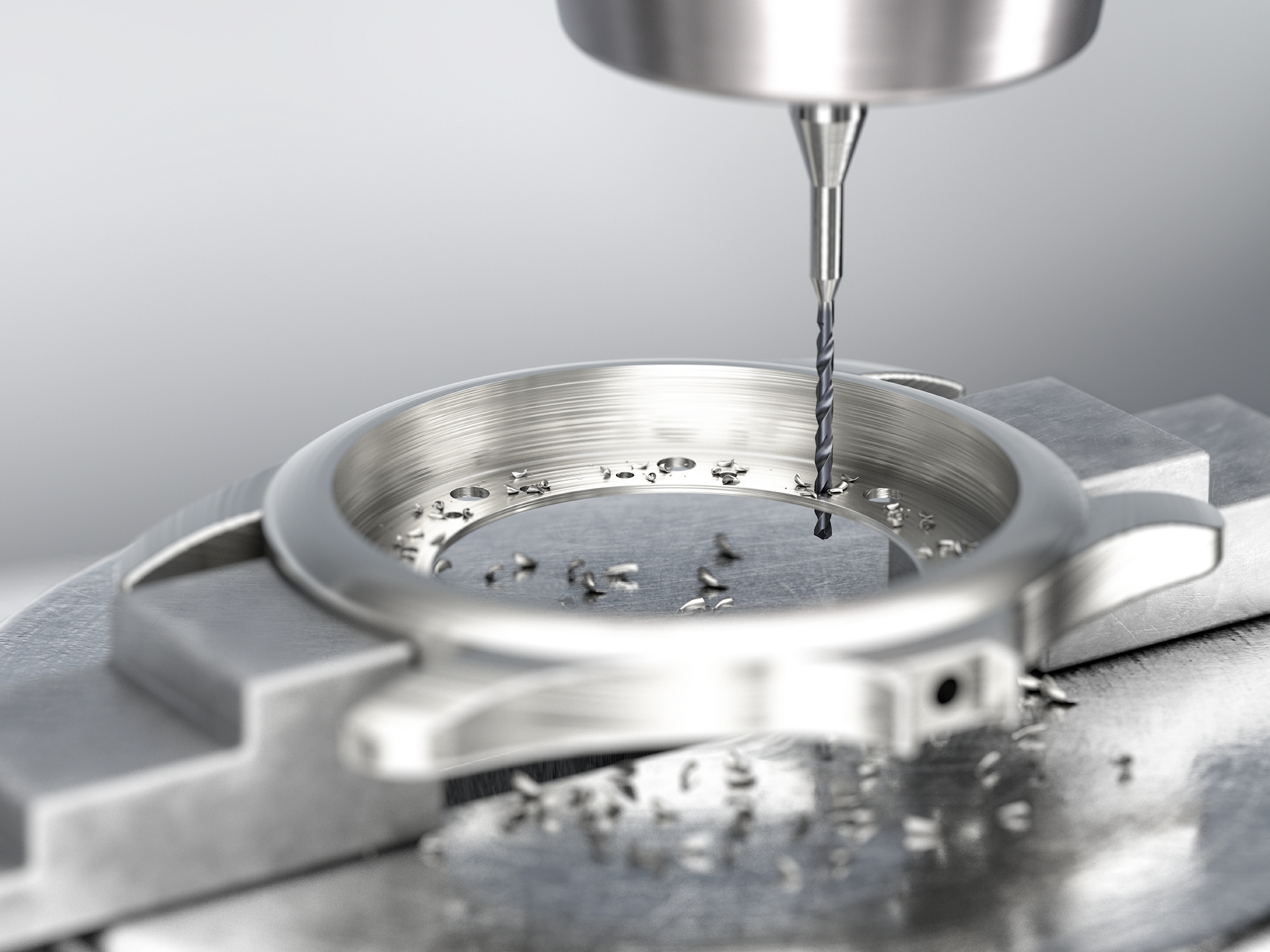
By James Thorpe, Global Product Manager, Sandvik Coromant
Steve Jobs’ philosophy, “We’ve got to make the smalls things unforgettable,” is getting truer each year as big electronics players like Intel, Samsung and TSMC squeeze more functionality into smaller devices and printed circuit boards (PCB).
But this progress presents challenges in applications like micro drilling, as manufacturers must strike a balance between quality and productivity when machining tiny components.
According to Fortune Business Insights, the global market for electronic manufacturing services (EMS) is expected to rise from $504.22 billion in 2022 to $797.94 billion by 2029. At the same time, electronic parts are getting smaller. The need for shrinking digital circuits is clear, as they can do more processing in less time and pack more storage space in the same volume. Consumers are also demanding higher resolution screen displays, which are achieved with smaller and more numerous pixels.

The growing need for smaller electronic parts presents real challenges for manufacturers, including in processes like micro drilling, which involves producing holes smaller than 3 mm (0.118 inches) in diameter. Micro drilling techniques are used to produce components ranging from aerospace components, hydraulic valves, watch cases and medical devices to surgical instruments, electronics, actuators, sensors, navigational systems and more.
But what are the challenges? In particular, manufacturers are increasingly required to machine small, intricate components from difficult-to-machine materials like Inconel, stainless steel, ceramics and titanium. It can be difficult to machine these materials cost-effectively while maintaining the utmost quality ― indeed, flawless surface finishes are as important for aerospace components as for fiber optic connectors.
To compete in the growing EMS markets, manufacturers must maintain the highest levels of quality control, while also reducing any issues in the production process that can cause excess scrap or downtime. How can manufacturers rise to these challenges, while remaining competitive? The answer lies in high performance-drilling solutions.
Longer-lasting tools
Manufacturers have found that micro drills can exhibit inadequate tool life when machining tough workpieces, like those made from ISO M materials. In these cases, the design, geometry and type of coating of the drill significantly impacted their performance and durability.
In response, Sandvik Coromant introduced two new micro drills: CoroDrill® 462 with -XM geometry and CoroDrill® 862 with -GM geometry. The tools are ideal for precision drilling in industries that deal with small parts such as medical, aerospace, automotive, general engineering, electronics and watchmaking, among others. This range of micro drills is available to support machining in all ISO materials: P, M, K, S, O and H. The new geometries offer a wide range of cutting diameters and lengths.
In other words, the quality of the micro drill makes all the difference to quality of the final machined product. But to what extent? To answer this question, Sandvik Coromant performed a test.
Quality output
Sandvik Coromant tooling specialists compared the performance of a major micro drill competitor’s tool against the CoroDrill 862 with -GM geometry.
Each tool was run in a DMG Mori Seiki Milltap 700 machine, for the purpose of drilling blind holes in an ISO M 316L stainless steel workpiece. The same tool setting was used in each case, a cutting diameter of 2.5 mm (Dc) with a speed (vc) of 40 m/min and a feed rate of 0.04 (fn) mm/z.
The results were clear: the competitor’s tool produced 630 holes before reaching tool life. Meanwhile, the CoroDrill 862 produced 1,260 holes, a more than 100 percent increase in tool life over the competitor’s drill.
Sandvik Coromant’s engineers recommend that customers seeking to drill micro-sized holes in notoriously difficult-to-machine materials, such as titanium, aluminium, glass and ceramics, should consider polycrystalline diamond (PCD) coating for extended tool life in these demanding applications. Based on successful tests of PCD drills on micro parts made from platinum, Sandvik Coromant has found that PCD is up to 100 times more wear-resistant than solid carbide, is also more accurate and can produce tighter tolerances than solid carbide tools.
Coolant is another important consideration. As with macroscale applications, it’s also critical to have quality coolant delivery to effectively evacuate chips when performing deep-hole drilling with micro tools. The immediate benefits of coolant include extended tool life and reduced risk of chip jamming.
These features have clear advantages for manufacturers’ overall operational expenditure (OPEX), and can also help manufacturers strike a balance between quality versus productivity when micro drilling tough materials like ISO M. In doing so, to paraphrase Steve Jobs, they can ensure the small things are unforgettable for all the right reasons.
To find out more about the CoroDrill 462 with -XM geometry and the CoroDrill 862 with -GM geometry, visit Sandvik Coromant’s website.
Contact Details
Related Glossary Terms
- ceramics
ceramics
Cutting tool materials based on aluminum oxide and silicon nitride. Ceramic tools can withstand higher cutting speeds than cemented carbide tools when machining hardened steels, cast irons and high-temperature alloys.
- coolant
coolant
Fluid that reduces temperature buildup at the tool/workpiece interface during machining. Normally takes the form of a liquid such as soluble or chemical mixtures (semisynthetic, synthetic) but can be pressurized air or other gas. Because of water’s ability to absorb great quantities of heat, it is widely used as a coolant and vehicle for various cutting compounds, with the water-to-compound ratio varying with the machining task. See cutting fluid; semisynthetic cutting fluid; soluble-oil cutting fluid; synthetic cutting fluid.
- feed
feed
Rate of change of position of the tool as a whole, relative to the workpiece while cutting.
- polycrystalline diamond ( PCD)
polycrystalline diamond ( PCD)
Cutting tool material consisting of natural or synthetic diamond crystals bonded together under high pressure at elevated temperatures. PCD is available as a tip brazed to a carbide insert carrier. Used for machining nonferrous alloys and nonmetallic materials at high cutting speeds.
- polycrystalline diamond ( PCD)2
polycrystalline diamond ( PCD)
Cutting tool material consisting of natural or synthetic diamond crystals bonded together under high pressure at elevated temperatures. PCD is available as a tip brazed to a carbide insert carrier. Used for machining nonferrous alloys and nonmetallic materials at high cutting speeds.
- quality assurance ( quality control)
quality assurance ( quality control)
Terms denoting a formal program for monitoring product quality. The denotations are the same, but QC typically connotes a more traditional postmachining inspection system, while QA implies a more comprehensive approach, with emphasis on “total quality,” broad quality principles, statistical process control and other statistical methods.

